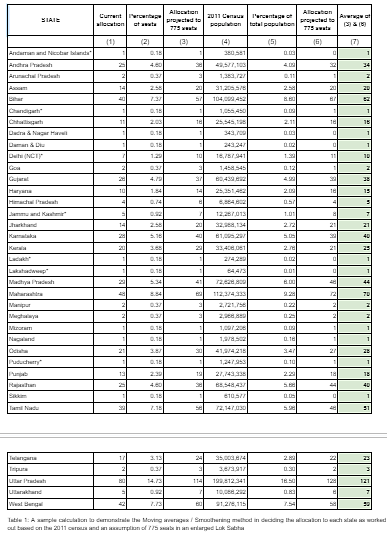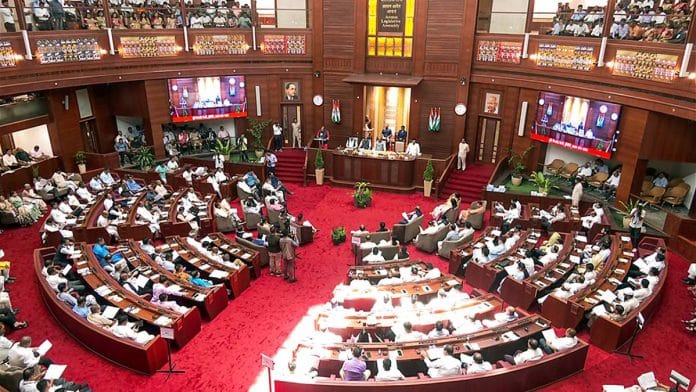Thank you dear subscribers, we are overwhelmed with your response.
Your Turn is a unique section from ThePrint featuring points of view from its subscribers. If you are a subscriber, have a point of view, please send it to us. If not, do subscribe here: https://theprint.in/subscribe/
As the election season has drawn to a close and all of us are still looking to rationalize the shock results, we need to look into one of the most important issue that any new government will have to tackle – the Delimitation issue. Briefly explained, the Delimitation exercise is carried out to allocate a number of seats to the states in proportion to their population to abide by the principle of ‘One person, One vote, One value’. By delimiting the constituencies, we can ensure that each Member of Parliament or Legislative Assembly represents roughly the same number of people (smaller states exceptions apply of course). The last delimitation exercise was carried out in 1971 and the subsequent one was to be done in 2001. In the year 2001, the Vajpayee government took the easy way out by kicking the can down the road and got a 25 year extension to do the delimitation given the coalition constraints. But this time around, continuing the same will not be fair on the said principle. It does not reflect well on the strength of Indian democracy to resolve even major issues by discussions and consensus. Hence the new government must make it a point to resolve the issue and go into the 2029 elections with the newly drawn constituencies.
However the major stumbling block to this policy has been the reactions evoked in the southern states, particularly in Tamil Nadu. The TN Legislative assembly as recently as 14th February, 2024 had passed a resolution opposing the yet to happen delimitation. The reasons cited are genuine enough. The improvement in population control measures of the southern states, the increased prosperity levels compared to the Hindi heartland and the outward migration of people from the southern states to destinations outside India have left the states lagging in population growth rate and total fertility rate. This is not to insinuate that the northern states have not picked up their efforts to control population growth. But the 30 year lag, particularly since the last delimitation, has created a considerable gap that will definitely get reflected if the 2026 population figures were to be the sole factor in deciding the new allocation.
So now what may be a solution? The current BJP government may propose to kick the can down the road once again; or they may seek to take only the 2026 Census as the reference for deciding the seats. Or alternatively, they may try different kinds of formulae similar to the Finance Commision formula to distribute Central government funds to the states. The formula may include parameters like population, total fertility rate, human development index, population growth / migration rate among others. But the principal issue with these formulas is that they are very difficult to take to the common people and make them understand the matter. It is another matter that these parameters can also be given different weights to achieve different results. The BJP is already finding it very difficult to explain the formula used in the Finance Commission for devolution of Central Government Funds to the States. This will only worsen their predicament.
Hence we now come to a different approach. In Statistics, there are two related concepts called ‘Moving averages method’ and ‘Smoothing method’. The objective is to lessen the effect of random or drastic fluctuations within time series data to provide stable output. We may implement such a scheme here to balance the need for a simple solution easy to explain to the common man, while adhering to the overall principle of proportional representation. Suppose the new delimitation exercise is mandated to divide 775 constituencies (an increase in the Lok Sabha strength has already been indicated by BJP leaders). The objective now is to have two sets of data, one where the current (2024) strength is projected onto the new total (775) and another where the proportion is derived from the impending census. Then we can do a simple average of the two, resolve decimal issues and come up with the final allocation. A sample calculation is shown in the below table based on the 2011 census:(1)

As suggested above, it solves the main issue of stagnant relative strength while accounting for the difference in demographics. This scheme can ‘smoothen’ or ‘soften’ the blow that the southern states will have to face in the case of an abrupt reduction in the seat share by giving another 25 years breathing space, by which time even the northern states will begin to stabilize in their population growth rates. It also neatly ties up the BJP leaders’ call to set up a Demographic commission to study such issues. We also propose to take this to the Legislative Assembly level so that the Parliamentary constituencies and Legislative constituencies are in sync. An issue of such delicacy needs to be implemented only after very elaborate deliberations and not by steam rolling the policy one way or the other. This issue is of utmost importance for the incoming government to take up and it is hoped that the new government will deal with the situation with utmost sensitivity so that the objective is met without any long lasting negative impact on the social fabric of the nation.
These pieces are being published as they have been received – they have not been edited/fact-checked by ThePrint


